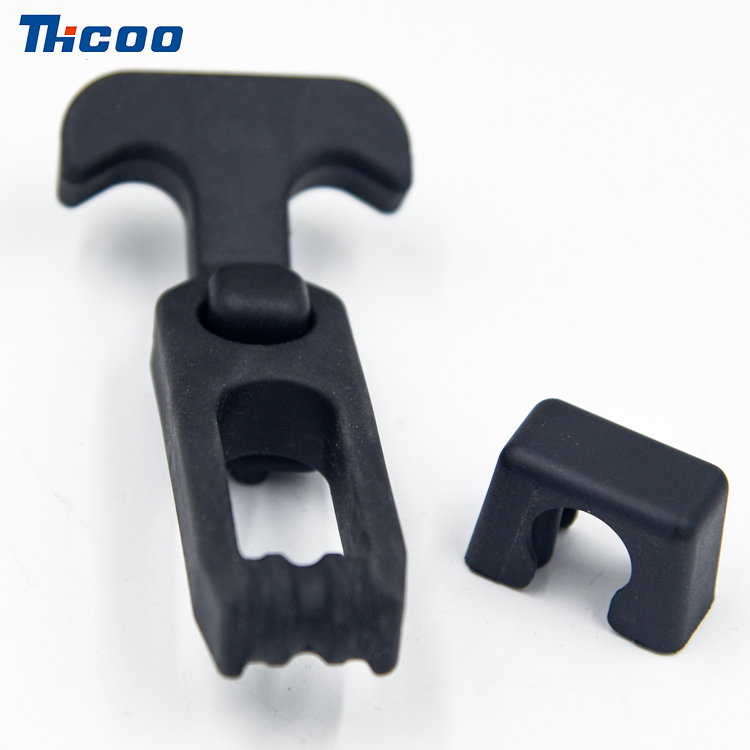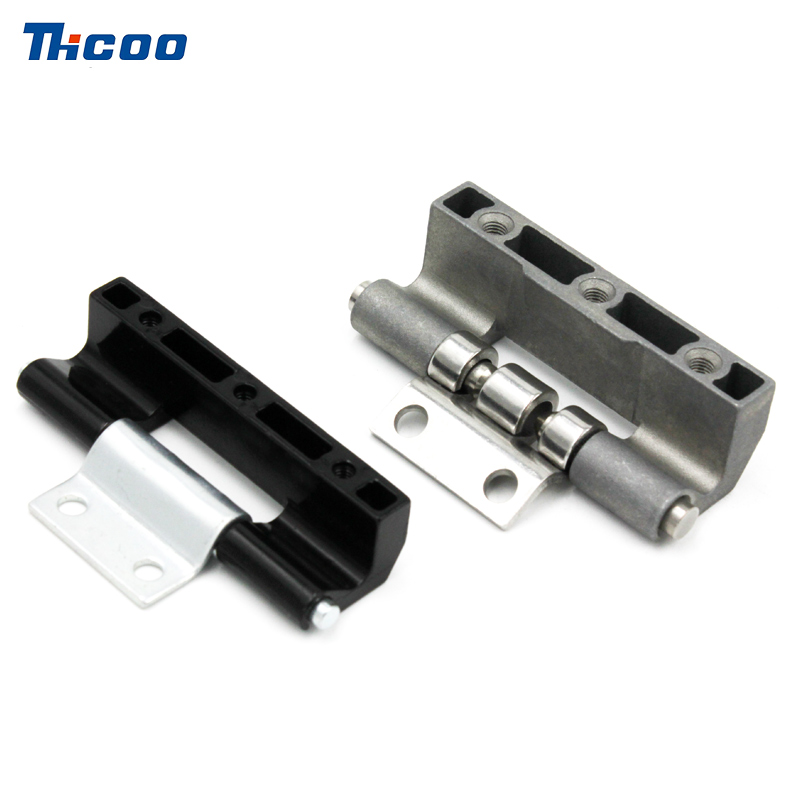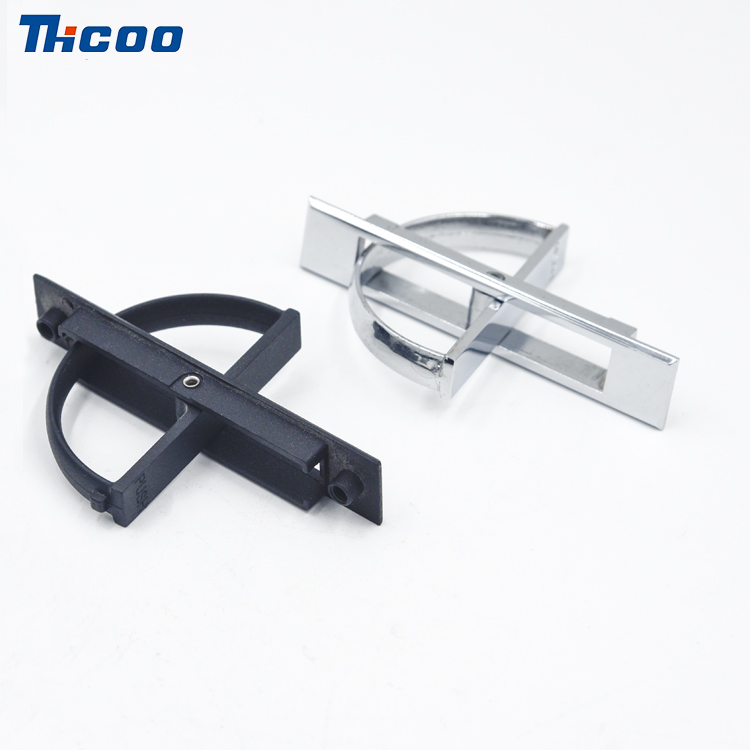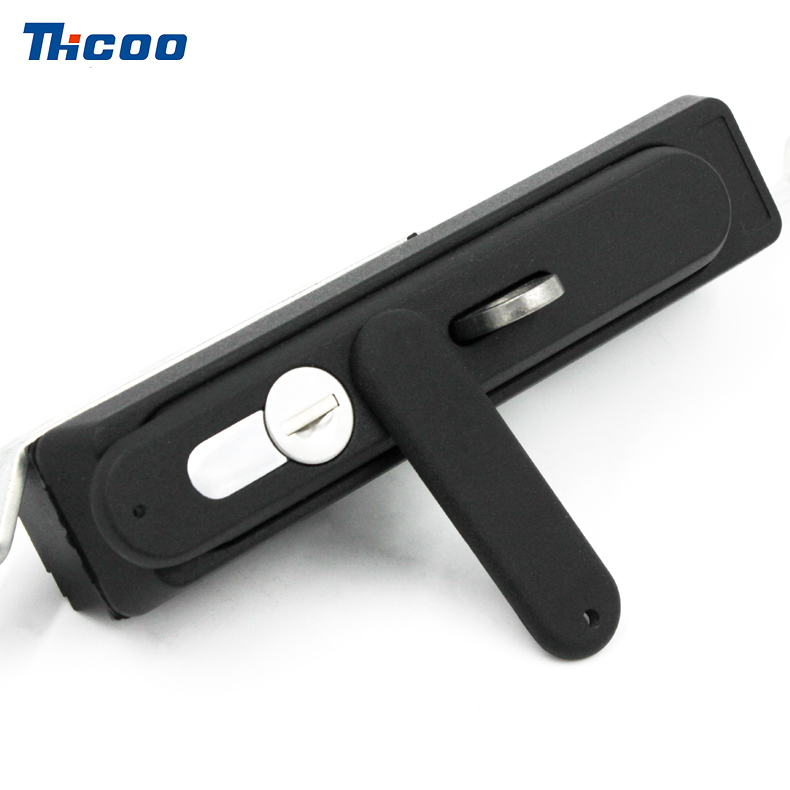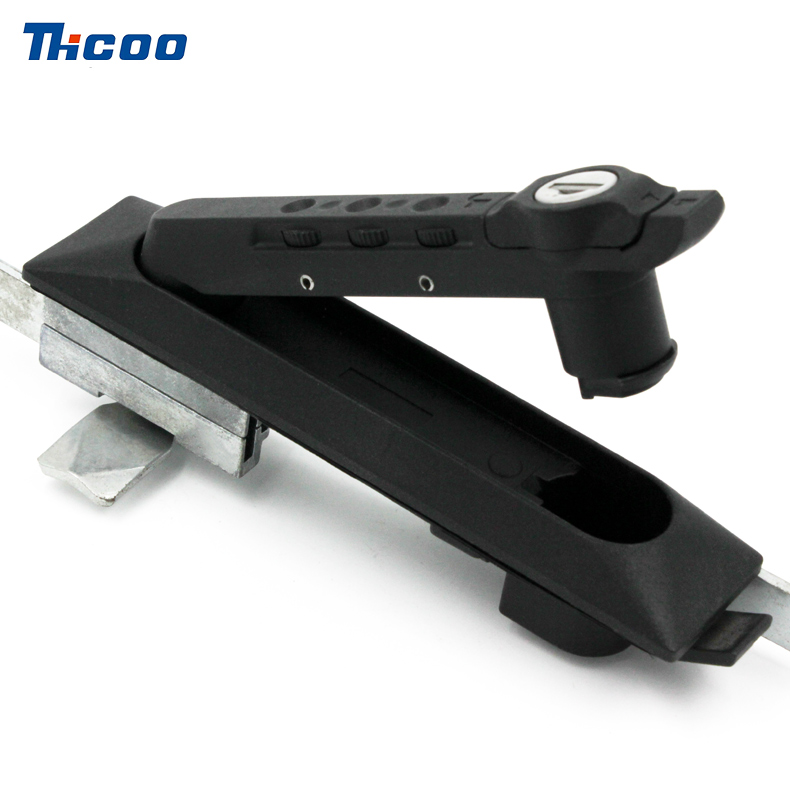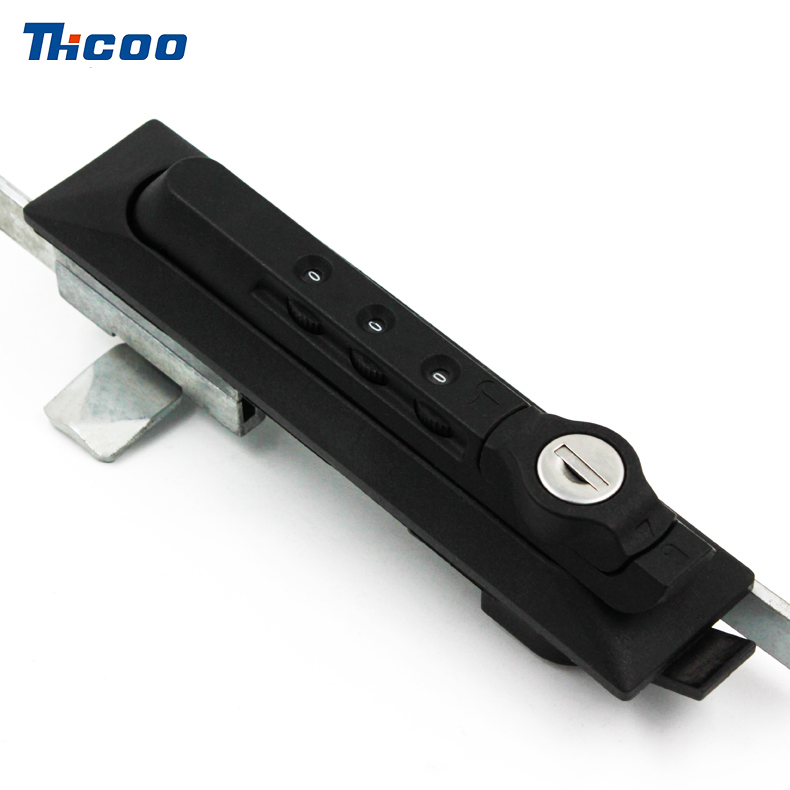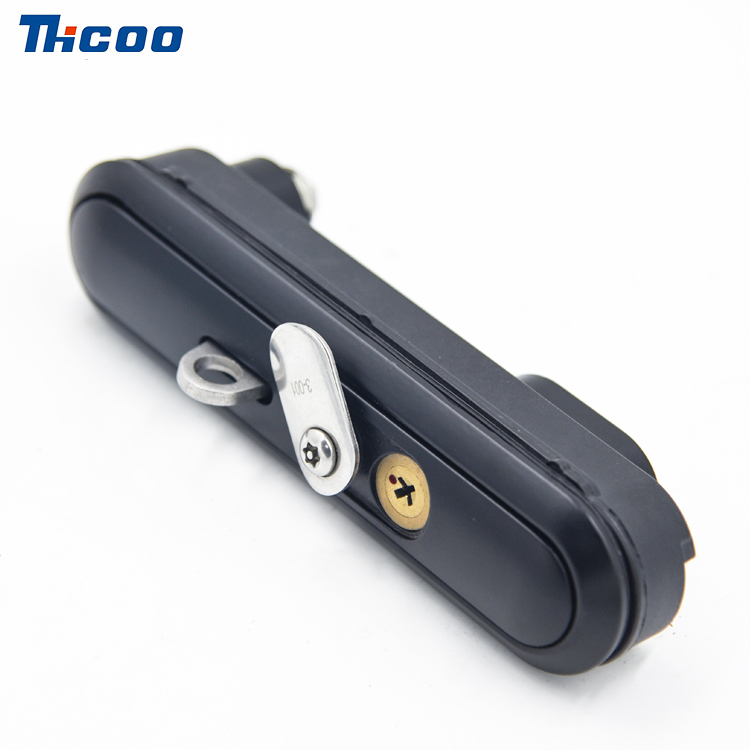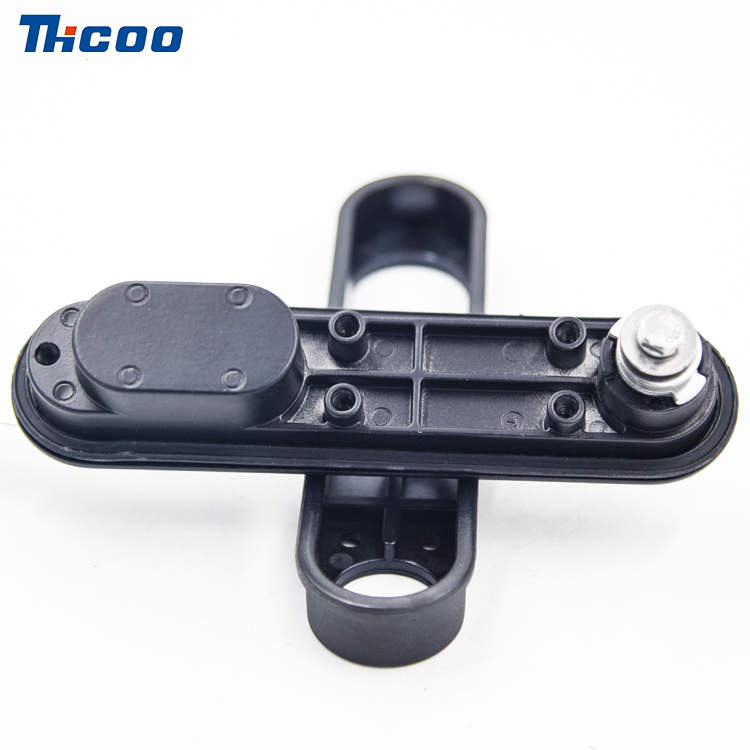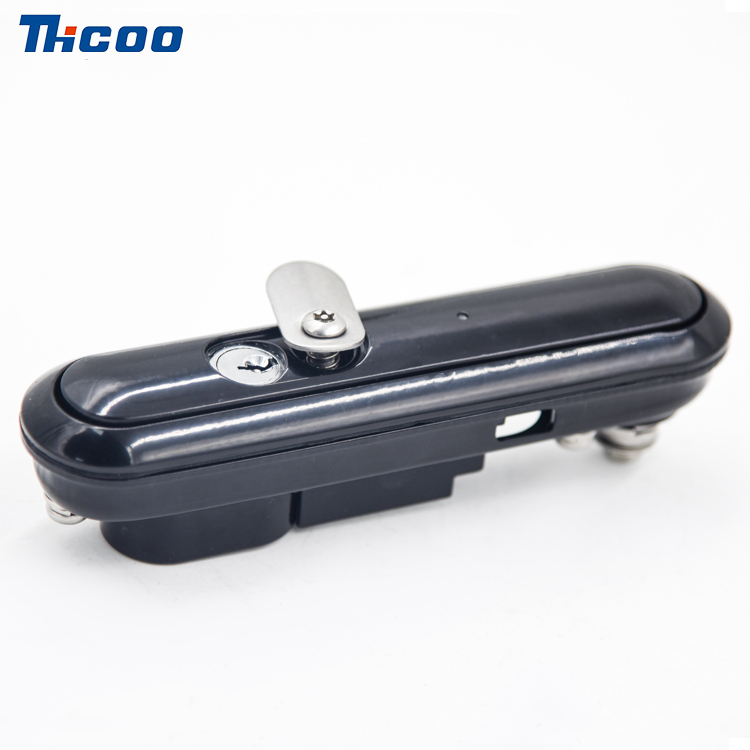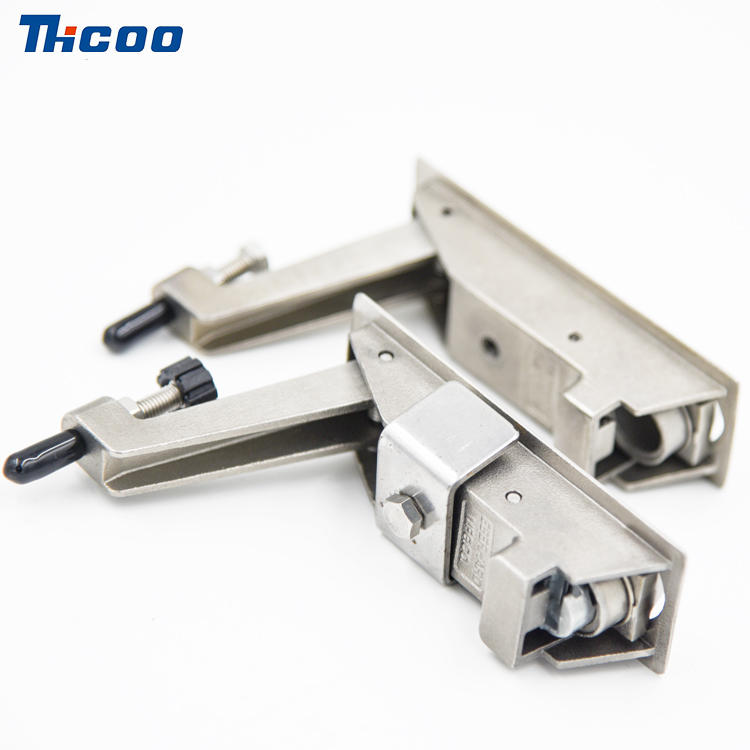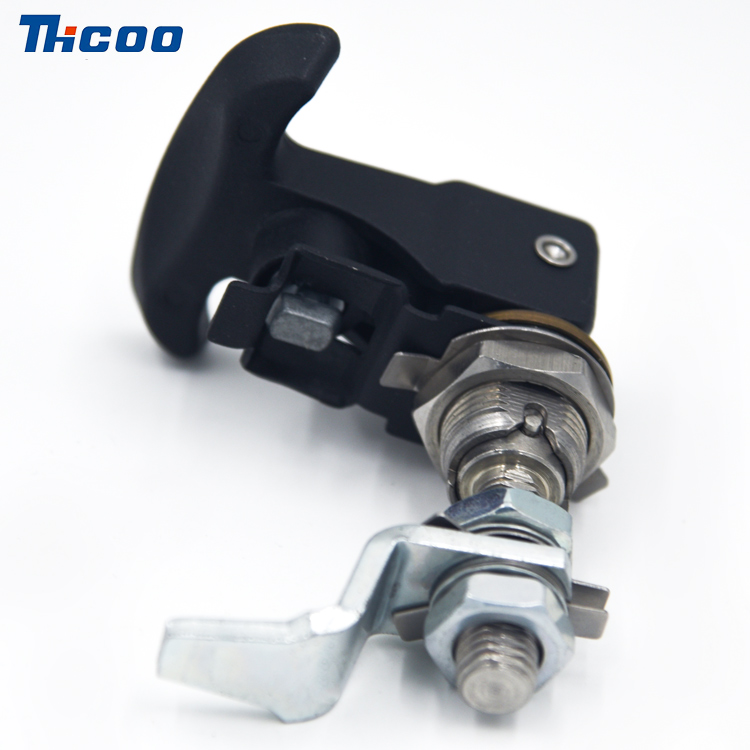Door locks are an essential component of any building’s security system, whether it's a residential home, a commercial office, or a hotel. They serve as the first line of defense against unauthorized entry and play a crucial role in ensuring the safety of people and assets. In this guide, we will explore the various types of door locks, their features, and how to choose the right one based on your needs.

Content
- 1 1. What is a Door Lock?
- 2 2. Types of Door Locks
- 3 3. Material Types of Door Locks
- 4 4. Features to Consider When Choosing a Door Lock
- 5 5. How to maintain Door Locks
- 6 6. How to Clean Door Locks
- 7 . Gather the Necessary Supplies
- 8 . Clean the Exterior of the Lock
- 9 . Clean the Keyway and Internal Mechanism
- 10 . Lubricate the Lock
- 11 . Test the Lock
- 12 . Deep Cleaning (Optional)
- 13 . Regular Maintenance Tips
- 14 . Special Considerations
- 15 7. Common Door Lock Problems and Solutions
- 16 8. Door Locks Installation Tips
- 17 9. Installation and Compatibility
- 18 10. Additional Features
- 19 11. Legal and Regulatory Compliance
- 20 12. Customer Reviews and Ratings
- 21 13. Warranty and Support
- 22 14. Budget and Value for Money
- 23 15. Additional Tips for Buyers
- 24 16. Additional Knowledges
- 25
- 26 17. How To Tell If Door Locks Are Damaged
- 27 18. How To Fix The Damage Of Door Locks
- 28 19. Smart Lock Emergency Features
- 29 20. Smart Lock Compatibility with Other Devices
- 30 21. Smart Lock Security and Privacy
- 31 22. How To Judge The Quality Of Door Locks
- 32
- 33 23. Smart Lock Installation and Professional Help
- 34 24. Smart Lock Future-Proofing and Upgradability
- 35 25. Smart Lock Cost Considerations
- 36 26. Smart Lock User Experience
- 37 27. Smart Lock Environmental and Safety Considerations
- 38 28. Smart Lock Security and Privacy Considerations
- 39 29. Conclusion
1. What is a Door Lock?
A door lock is a mechanism designed to keep doors locked or shut, depending on the user’s preference or inclination at the time. It can only be opened with a key or a combination (series of manipulations), depending on what type of lock it is. The primary purpose of a door lock is to provide security by preventing unauthorized access to a building or property.
2. Types of Door Locks
There are several types of door locks available, each with its own unique features and benefits. Understanding the different types of locks can help you make an informed decision when choosing the right one for your needs.
| Door Locks Types | Description | Features | Applications |
| Deadbolt Locks | A type of lock that is typically installed on the exterior of a door and requires a key to unlock. It has a key on the outside and a thumb turn on the inside. | - Provides strong security against forced entry - Can be single-cylinder or double-cylinder |
- Used on bedroom doors and windows - Often used in conjunction with other locks |
| Knob Locks | A lock that uses a knob on both the outside and inside of the door. The outside knob has a key cylinder, and the inside knob has a press button for locking. | - Easy to use and operate<br>- Can be locked from the inside or outside | - Commonly used on interior doors<br>- Not recommended for exterior doors due to vulnerability to forced entry |
| Lever Handle Locks | A lock that uses a lever handle on both the outside and inside of the door. The lever handle is operated by a key or a thumb turn. | - Provides a balance between security and ease of use - Can be operated from the inside or outside |
- Suitable for commercial and residential use - Often used in offices and shops |
| Padlocks | A portable lock that is used to secure gates, doors, or other objects. It consists of a main body with a U-shaped shackle and a locking mechanism. | - Can be used on a single loop or two loops - Can be opened from the outside or inside with the right key |
- Used for securing gates, doors, and other objects - Not recommended for high-security applications |
| Mortise Locks | A lock that is embedded into a pocket (mortise) cut into the edge of a door or piece of furniture. | - Provides a high level of security - Can be customized to fit different door sizes and applications |
- Used in older homes and commercial buildings - Often used in conjunction with other locks |
| Cylindrical Locks | A lock that uses a cylinder with pins on springs to prevent unauthorized access without a key. | - Can be simple or complex, depending on the number of locking rods and anti-theft measures | - Used in a wide range of applications, including doors, cabinets, and furniture - Can be easily rekeyed by a locksmith |
| Disk Locks | A lock that consists of rotating discs with key holes at their centers. | - Resistant to temperature changes, moisture, and dust ingress - Can be difficult to pick or break |
- Used in high-security applications - Often used in commercial and industrial settings |
| Lever Locks | A lock that uses a lever handle with cutouts in the levers for the key to turn. | - Provides a balance between security and ease of use - Can be operated from the inside or outside |
- Used in commercial and residential settings - Often used in offices and shops |
| Smart Locks | A lock that uses technology to provide remote access and control. | - Can be unlocked with a smartphone, key, or biometric authentication - Can be integrated with smart home systems |
- Used in residential and commercial settings - Offers convenience and security features |
| Magnetic Locks | A lock that uses magnetic attraction to secure a door. | - Can be installed on a variety of door types - Can be used for high-security applications |
- Used in commercial and industrial settings - Often used in conjunction with other locks |
3. Material Types of Door Locks
| Materials Used in Door Locks | Description | Properties | Applications |
| Steel | A strong and durable metal commonly used in door locks. | High strength, good durability, and resistance to wear and tear. | Suitable for both residential and commercial applications. |
| Brass | A copper-zinc alloy known for its strength and aesthetic appeal. | Good balance of strength, durability, and corrosion resistance. | Often used in decorative elements and high-security applications. |
| Zinc Alloy | A lightweight metal that is easy to cast and process. | Good mechanical properties, wear resistance, and can be treated with various surface finishes. | Commonly used in the production of door locks and other hardware components. |
| Aluminum | A lightweight and corrosion-resistant metal. | Lightweight, durable, and resistant to corrosion. | Suitable for environments where weight is a concern, such as in commercial and industrial settings. |
| Stainless Steel | A durable and corrosion-resistant metal. | Excellent resistance to corrosion and high durability. | Particularly suitable for high-security applications and environments where corrosion resistance is important. |
| Chrome | A surface finish that provides a durable and aesthetically pleasing appearance. | Durable and resistant to wear and tear. | Often used in the production of door handles and decorative elements. |
| Nickel | A durable and corrosion-resistant metal. | Excellent resistance to corrosion and high durability. | Suitable for high-security applications and environments where corrosion resistance is important. |
| Plastic | A lightweight and cost-effective material. | Lightweight and easy to process, but not as durable as metal. | Suitable for low-security applications and environments where weight is a concern. |
| Composite Materials | A combination of different materials to create a single product. | Strong and lightweight, with good mechanical properties. | Used to create door locks and other hardware components that are both strong and lightweight. |
| Copper | A durable and corrosion-resistant metal. | Good resistance to corrosion and high durability. | Suitable for high-security applications and environments where corrosion resistance is important. |
4. Features to Consider When Choosing a Door Lock
| Feature | Description |
| Security | High-security locks are essential for protecting your business, assets, and sensitive information. Look for locks that meet or exceed industry standards, such as ANSI/BHMA Grade 1 or Grade 2, and have appropriate fire ratings. Deadbolt locks are one of the most common and secure types of door locks. They are simple, secure, and relatively inexpensive. Deadbolts come in two basic types: single-cylinder and double-cylinder. Single-cylinder deadbolts have a key on the outside and a thumb turn on the inside, while double-cylinder deadbolts have a key on both the inside and outside. Consider the benefits of each type of lock and weigh them against the cost to determine which one is the best fit for your budget. |
| Durability | Durability is another important factor when choosing a door lock. Look for locks made from high-quality materials that can withstand wear and tear and potential break-in attempts. Mortise locks are very durable and strong locks commonly used on external doors that are frequently opened and closed. They are ideal for commercial doors and residential homes that require very reliable security. Mortise locks are known to be a superior choice compared to cylindrical locks, since they offer a higher level of security and last longer. Mortise locks are made up of an internal lock system with five main parts: the mortise, lock body, lock trim, strike plate, and keyed cylinder (or lever mechanism). Benefits of mortise locks include that they offer a high-level of security, they are offered in different sizes depending on the application, and they are very durable. However, mortise locks are not compatible with doors with a width less than 1.38in, they do not offer an automatic locking option, and they are difficult to install, rekey, and repair. |
| Ease of Use | Ease of use is an important consideration when choosing a door lock. Look for locks that are user-friendly and easy to operate for authorized individuals. Smart locks are an excellent choice for residential customers who want to have a convenient and easy way to enter their home. Smart locks rely on Wi-Fi or Z-Wave to operate, which allows users to have remote access and control over their front door by using a smartphone. With smart locks, it won’t be necessary for users to unlock their door with a physical key. Instead, smart locks can be unlocked by entering a code on a touchscreen keypad or pushbutton keypad. The most common types of smart locks you will find are smart deadbolts and smart lever locks. Advantages of smart door locks include that they are convenient and easy to use, customizable to your customers' needs, and offer a good level of security. Some disadvantages include that they need to have their batteries replaced frequently, some features won’t be accessible without Wi-Fi, and people without smartphones won’t be able to maximize the benefits smart locks offer. |
| Maintenance Needs | Maintenance needs are an important consideration when choosing a door lock. Look for locks that are easy to maintain and have a long lifespan. Mortise locks are very durable and strong locks commonly used on external doors that are frequently opened and closed. They are ideal for commercial doors and residential homes that require very reliable security. Mortise locks are known to be a superior choice compared to cylindrical locks, since they offer a higher level of security and last longer. Mortise locks are made up of an internal lock system with five main parts: the mortise, lock body, lock trim, strike plate, and keyed cylinder (or lever mechanism). Benefits of mortise locks include that they offer a high-level of security, they are offered in different sizes depending on the application, and they are very durable. However, mortise locks are not compatible with doors with a width less than 1.38in, they do not offer an automatic locking option, and they are difficult to install, rekey, and repair. |
5. How to maintain Door Locks
To maintain the longevity and functionality of your door locks, it is essential to follow a series of regular maintenance and care practices. These steps not only help prevent damage and wear but also ensure the continued security of your home. Here are the key tips for maintaining your door locks:
| Maintenance Task | Description | Frequency | Tools/Supplies | Notes |
| Regular Cleaning | Remove dust, dirt, and debris from the lock mechanism. | Every 3-6 months | Soft brush, compressed air, mild detergent | Avoid harsh chemicals and abrasive materials |
| Lubrication | Apply lubricant to moving parts to reduce friction. | Every 6-12 months | Graphite-based lubricant | Avoid oil-based lubricants |
| Tightening Screws and Bolts | Check and tighten any loose screws or bolts. | Every 6 months | Screwdriver | Ensure screws are fully tightened |
| Checking Alignment | Ensure the door is properly aligned with the frame. | Every 6 months | Measuring tape, level | Adjust door position if necessary |
| Inspecting Key and Lock Core | Check for wear or damage on the key and lock core. | Every 3 months | Key inspection tool | Replace damaged keys promptly |
| Maintaining Strike Plate and Threshold | Ensure the strike plate is aligned and the threshold is level. | Every 6 months | Level, measuring tape | Replace damaged strike plate if needed |
| Avoiding Over-Tightening | Do not force the door shut or apply excessive pressure. | As needed | Gently close the door | Use lock mechanism to secure the door |
| Checking for Rust and Corrosion | Inspect for rust or corrosion and clean if necessary. | Every 3 months | Rust removal agent, vinegar, baking soda | Apply protective coating after cleaning |
| Battery Maintenance | Check battery levels and replace as needed. | Every 3-6 months | Battery tester | Use correct battery type for electronic lock |
| Changing Access Codes | Update access codes and passwords regularly. | Every 3 months | Access code generator | Use complex passwords |
| Professional Maintenance | Schedule regular inspections and maintenance by a qualified locksmith. | Annually | Locksmith service | Prevents costly repairs and ensures security |
| Environmental Protection | Use weatherproof covers or guards to protect from harsh weather. | As needed | Weatherproof cover, lock guard | Protect from water, dust, and debris |
| Avoiding Improper Use | Follow manufacturer's instructions for proper use. | As needed | User manual | Do not use lock as a tool or force it |
| Monitoring and Testing | Test the lock regularly to ensure it functions correctly. | Every 3 months | Key, test tool | Check for smooth operation and responsiveness |
| Replacement of Worn Components | Replace worn-out parts as soon as possible. | As needed | Replacement parts | Consult a professional for assessment and replacement |
| Maintenance Task | Description | Frequency | Tools/Supplies | Notes |
| Checking for Proper Function of the Latch Mechanism | Ensure the latch mechanism operates smoothly and securely. | Every 3 months | Key, test tool | Check for any resistance or difficulty in operation |
| Checking for Proper Function of the Latch Spring | Ensure the latch spring is properly tensioned and functions correctly. | Every 6 months | Key, test tool | Check for any resistance or difficulty in operation |
| Checking for Proper Function of the Latch Bolt | Ensure the latch bolt extends fully and locks securely. | Every 3 months | Key, test tool | Check for any resistance or difficulty in operation |
| Checking for Proper Function of the Latch Strike | Ensure the latch strike is properly aligned and functions correctly. | Every 6 months | Measuring tape, level | Adjust strike if necessary |
| Checking for Proper Function of the Latch Plate | Ensure the latch plate is properly aligned and strikes the strike plate. | Every 3 months | Measuring tape, level | Adjust strike plate if necessary |
| Checking for Proper Function of the Latch Handle | Ensure the latch handle turns smoothly and locks securely. | Every 6 months | Key, test tool | Check for any resistance or difficulty in operation |
| Checking for Proper Function of the Latch Mechanism | Ensure the latch mechanism operates smoothly and securely. | Every 3 months | Key, test tool | Check for any resistance or difficulty in operation |
| Checking for Proper Function of the Latch Spring | Ensure the latch spring is properly tensioned and functions correctly. | Every 6 months | Key, test tool | Check for any resistance or difficulty in operation |
| Checking for Proper Function of the Latch Bolt | Ensure the latch bolt extends fully and locks securely. | Every 3 months | Key, test tool | Check for any resistance or difficulty in operation |
| Checking for Proper Function of the Latch Strike | Ensure the latch strike is properly aligned and functions correctly. | Every 6 months | Measuring tape, level | Adjust strike if necessary |
| Checking for Proper Function of the Latch Plate | Ensure the latch plate is properly aligned and strikes the strike plate. | Every 3 months | Measuring tape, level | Adjust strike plate if necessary |
| Checking for Proper Function of the Latch Handle | Ensure the latch handle turns smoothly and locks securely. | Every 6 months | Key, test tool | Check for any resistance or difficulty in operation |
6. How to Clean Door Locks
To clean your door locks effectively and ensure their longevity and optimal performance, follow these steps and guidelines:
. Gather the Necessary Supplies
Before you begin, make sure you have the following tools and materials:
- Soft cloth or microfiber cloth – to wipe down the lock surface.
- Mild dish soap or neutral cleaner – to gently clean the lock.
- Warm water – to rinse the lock after cleaning.
- Compressed air – to remove dust and debris from hard-to-reach areas.
- Lock-specific lubricant (e.g., graphite powder or silicone spray) – to keep the lock moving smoothly.
- Small brush or toothbrush – to clean the keyway and internal parts.
- Screwdriver (optional) – if you need to disassemble the lock for deep cleaning.
. Clean the Exterior of the Lock
- Start by wiping the surface of the lock with a soft cloth or microfiber cloth to remove any visible dust or dirt.
- Avoid using harsh chemicals or abrasive cleaners, as these can damage the lock’s finish or internal components.
- If the lock is made of brass or another metal, use a neutral cleaner to prevent corrosion.
. Clean the Keyway and Internal Mechanism
- Use a toothbrush or small brush to gently scrub the keyway and any crevices where dirt or debris may have accumulated.
- Dip the brush in warm soapy water and gently work it into the keyway to remove grime.
- For stubborn dirt, you can use a cotton swab dipped in a mild cleaning solution to clean the keyhole.
- Compressed air can be used to blow out any remaining dust or debris from the lock mechanism.
. Lubricate the Lock
- After cleaning, apply a small amount of lock-specific lubricant (such as graphite powder or silicone spray) to the keyway and moving parts.
- Insert the key into the lock and turn it a few times to distribute the lubricant evenly.
- This helps reduce friction and ensures smooth operation.
. Test the Lock
- After cleaning and lubricating, test the lock by locking and unlocking it with the key.
- Ensure the lock operates smoothly and without resistance.
- If the lock still feels stiff or difficult to turn, it may need a more thorough cleaning or professional servicing.
. Deep Cleaning (Optional)
If the lock is particularly dirty or stiff, you can perform a deep cleaning by:
- Removing the lock from the door using a screwdriver.
- Disassembling the lock to access the internal mechanism.
- Cleaning each component with a mild solvent or brush.
- Reassembling the lock and applying lubricant to all moving parts.
- Reinstalling the lock on the door and testing it again.
. Regular Maintenance Tips
- Clean your locks every 3–6 months to prevent dirt buildup and ensure smooth operation.
- Avoid using harsh chemicals like alcohol or bleach, as they can damage the lock’s finish.
- Keep the area around the lock clean to prevent dust and debris from entering the keyway.
- Lubricate the lock regularly to maintain smooth operation and prevent wear.
. Special Considerations
- Brass locks should be cleaned with a neutral cleaner and avoided with strong acids or alkalis.
- Electronic locks should be cleaned with a dry cloth to prevent moisture from entering the electronic components.
- Smart locks should be lubricated with a silicone-based lubricant to ensure smooth operation and prevent sticking.
By following these steps, you can keep your door locks in excellent condition, extend their lifespan, and ensure the security of your home.
7. Common Door Lock Problems and Solutions
| Problem | Description | Cause | Solution | Notes |
| Sticking or Stiff Locks | A lock that becomes difficult to turn or gets stuck. | Accumulation of dirt, dust, or rust in the lock mechanism. | Clean the lock with a mild cleaner and apply lubricant to the keyhole. | Use a soft brush to clean the keyway and compressed air to remove debris. |
| Misaligned Strike Plate | The door latch does not engage properly with the strike plate. | The strike plate is not aligned with the door. | Adjust the strike plate by loosening the screws and realigning it. | If the strike plate is damaged, replace it. |
| Loose Doorknob or Handle | The doorknob or handle feels loose and may not stay in place. | The screws holding the doorknob or handle are loose. | Tighten the screws that hold the doorknob or handle in place. | If the screws are damaged, replace them with new hardware. |
| Key Issues | The key does not turn smoothly or gets stuck in the lock. | The key is worn or damaged, or the lock mechanism is dirty. | Clean the keyway and apply lubricant to the keyhole. | Replace the key if it is damaged. |
| Broken Key in the Lock | The key is the lock and is stuck inside. | The key is broken or the lock is jammed. | Contact a professional locksmith to safely remove the broken key. | If the key is broken, use a key without a lock to open the door if possible. |
| Worn Out or Damaged Locks | The lock is worn out or damaged, making it difficult to function properly. | Prolonged use and wear. | Replace the lock with a new one. | If the lock is damaged, contact a professional locksmith to repair it. |
| Electronic Lock Malfunction | The electronic lock is not working or is not responding to commands. | Battery issues, software glitches, or hardware problems. | Check the battery level and replace it if necessary. | If the lock is not responding, try resetting it by following the manufacturer's instructions. |
| Key Not Inserting Properly | The key does not insert into the lock or is difficult to turn. | The key is incorrect or the lock is dirty. | Ensure the key is the correct one for the lock. | Clean the keyway and apply lubricant to the keyhole. |
| Door Won’t Close Properly | The door does not shut all the way or won’t latch properly. | The door is not aligned with the strike plate. | Adjust the door hinges to ensure the door is properly aligned. | Check the strike plate and adjust it if necessary. |
| Lock is Broken | The lock is broken and cannot be repaired. | The lock is beyond repair due to damage. | Replace the lock with a new one. | Contact a professional locksmith to assist with the replacement. |
8. Door Locks Installation Tips
| Door Locks Installation Tips | Description | Tools/Supplies | Notes |
| 1. Choose the Right Lock for Your Door | Select a lock that matches the type of door and security requirements. | Measuring tape, level, lock set | Ensure the lock is compatible with the door material and security level |
| 2. Prepare the Tools and Materials | Gather all necessary tools and materials before starting the installation. | Screwdriver, electric drill, measuring tape, level, lock set | Ensure all tools are in good condition and suitable for the task |
| 3. Measure and Mark the Installation Position | Accurately measure the height and width of the door and mark the positions. | Measuring tape, pencil, level | Ensure the marks are clear and precise |
| 4. Drill the Holes | Use the correct drill bit size and depth according to the lock’s specifications. | Electric drill, drill bit | Keep the drill perpendicular to the door surface |
| 5. Install the Lock Body | Insert the lock body into the pre-drilled holes and secure it with screws. | Screwdriver, lock body | Avoid over-tightening to prevent damage |
| 6. Install the Lock Core | Align the lock core with the door and secure it with screws. | Screwdriver, lock core | Ensure the core is properly aligned |
| 7. Install the Lock Tongue and Strike Plate | Attach the lock tongue and adjust the strike plate for proper alignment. | Screwdriver, strike plate | Test the tongue to ensure it moves smoothly |
| 8. Install the Handle | Determine the direction of the door and install the handle accordingly. | Screwdriver, handle | Ensure the handle turns smoothly |
| 9. Test the Installation | Open and close the door multiple times to ensure the lock operates smoothly. | Key, test tool | Make adjustments if necessary |
| 10. Regular Maintenance | Periodically lubricate the lock core and moving parts. | Graphite powder, silicone spray | Ensure smooth operation and prevent wear |
| 11. Safety and Security Considerations | Avoid over-tightening and use quality materials for a secure installation. | Professional locksmith (optional) | Consider hiring a professional if unsure about the installation process |
9. Installation and Compatibility
When installing a door lock, it's important to consider the compatibility of the lock with your existing door and hardware. Different types of locks may require different installation methods and hardware. For example, mortise locks are typically installed in a mortise cutout in the door, while cylindrical locks are installed on the surface of the door. It's also important to consider the size and thickness of the door when selecting a lock. Some locks may not be compatible with doors that have a width less than 1.38in or a thickness that is too thin for the lock's mechanism.
10. Additional Features
In addition to the basic features discussed, there are several additional features that can enhance the functionality and security of a door lock. These include:
10.1 Keyless Entry
Keyless entry systems allow users to unlock their doors without the need for a physical key. This can be achieved through a variety of methods, including keypad entry, pushbutton entry, and smartphone apps. Keyless entry systems are particularly popular in residential settings, where convenience and ease of use are important factors.
10.2 Alarm Systems
Alarm systems can be integrated into door locks to provide an additional layer of security. These systems can alert homeowners or security personnel in the event of a break-in or unauthorized access. Some alarm systems are triggered by the lock itself, while others require additional sensors or devices to be installed.
10.3 Integration with Smart Home Systems
Many modern door locks can be integrated with smart home systems, allowing users to control and monitor their locks remotely. This integration can be achieved through Wi-Fi, Z-Wave, or Bluetooth connectivity. Smart home systems can also provide additional features such as scheduling, automation, and remote monitoring.
11. Legal and Regulatory Compliance
In some regions, there are legal and regulatory requirements that must be met when selecting and installing door locks. For example, in the United States, the National Electrical Code (NEC) and the International Building Code (IBC) set standards for electrical and mechanical systems, including door locks. It's important to ensure that the chosen lock complies with these regulations to avoid legal issues and ensure the safety of the building.
In addition to building codes, there may be specific regulations related to fire safety and emergency egress. For example, in the event of a fire, doors must be able to open easily from the inside, and locks must be designed to allow for quick and safe evacuation. It's important to choose locks that are compatible with fire-rated doors and have features that facilitate emergency egress.
12. Customer Reviews and Ratings
When researching door locks, it's important to consider customer reviews and ratings. These can provide valuable insights into the performance and reliability of a particular lock. Look for reviews that mention the lock's security, durability, ease of use, and customer service. Positive reviews can indicate that the lock is well-made and functions as intended, while negative reviews can highlight potential issues or shortcomings.
Ratings can also be a useful indicator of a lock's quality. Look for locks that have high ratings from trusted sources, such as consumer review websites and industry publications. A high rating can indicate that the lock is well-regarded by users and has a good reputation for reliability and performance.
13. Warranty and Support
When purchasing a door lock, it's important to consider the warranty and support provided by the manufacturer. A good warranty can provide peace of mind and ensure that the lock is covered for defects or malfunctions. Look for locks that offer a warranty period that is appropriate for the product, and that covers both parts and labor.
In addition to the warranty, it's important to consider the level of support provided by the manufacturer. Look for companies that offer customer service, technical support, and installation assistance. A reliable manufacturer can provide guidance and support throughout the life of the lock, ensuring that it functions properly and meets the user's needs.
14. Budget and Value for Money
When choosing a door lock, it's important to consider the budget and the value for money. While it's tempting to choose the most expensive lock, it's important to find a balance between cost and quality. Look for locks that offer a good combination of features, durability, and security for the price.
Consider the long-term value of the lock. A higher-quality lock may have a higher upfront cost but can save money in the long run by reducing the risk of break-ins and theft. Additionally, consider the potential for future upgrades or replacements. A lock that is easy to upgrade or replace can provide long-term value and reduce the need for frequent replacements.
15. Additional Tips for Buyers
| Additional Tips for Buyers | Description |
| Measure Your Door | Before purchasing a door lock, measure the dimensions of your door to ensure that the lock is compatible with the size and thickness of the door. |
| Check the Lock Type | Consider the type of lock that best suits your needs. For example, a deadbolt lock is ideal for residential use, while a smart lock is better suited for homes with multiple users or those who want to integrate with smart home systems. |
| Consider the Lock's Features | Look for locks that offer features such as keyless entry, alarm systems, and integration with smart home systems. These features can enhance the security and convenience of your home. |
| Read Reviews and Ratings | Take the time to read reviews and ratings from other users to get a sense of the lock's performance and reliability. |
| Check the Warranty and Support | Ensure that the manufacturer offers a warranty and provides good customer support. This can help ensure that the lock is covered for defects and that you have access to technical support if needed. |
| Consider Future Upgrades | Think about the potential for future upgrades or replacements. A lock that is easy to upgrade or replace can provide long-term value and reduce the need for frequent replacements. |
16. Additional Knowledges
| Category | Description |
| Model Building Guide | The table provides a detailed guide for customizing door lock models. It includes sections such as "Front," "Side," "Back," "Back Side," "ASM Mortise," and "Strike." Each section lists different options and codes for customizing the various parts of the lock. For example, the "Model" section lists different lock models, such as "79SO" and "79R0," each with specific locking mechanisms, applications, lever types, finishes, versions, Bluetooth, and completion options. The table also provides specific descriptions and codes for each option, such as "23/4" (70 mm) Backset and "Electronic." Users can build a lock model by selecting different options. |
| Standard Model Example | The table shows a standard model example of how to build a lock model number, including fields such as model, version, locking mechanism, communication, application, lever, and handle. The second part is a blank template for users to choose different options to build their own model number. The third part is a detailed list of options, including style, version, locking mechanism, communication, application, lever, and handle. Users can choose the appropriate options based on their specific needs to build a custom lock model. |
| Lock Series Characteristics | The table lists the characteristics, materials, and installation types of different lock series. It includes four columns: lock series name, lock series characteristics, opening method, and installation type. The lock series include OPAL FLUSH, OPAL, CRISTAL, TRADITION, and INTEGRATION. Each series has specific characteristics, opening methods, and installation types. For example, the OPAL FLUSH series has a very flat profile, designed to be simple and durable, and is suitable for IIa, III, and IV installation types. |
| Model Number Construction | The table provides a guide for building a standard model number for customizing door locks. It includes three parts: a standard model example, a blank template for building the model number, and a detailed list of options. The standard model example shows how to build a complete model number, including fields such as model (Q), version (R1), locking mechanism (1), communication (N), application (0), lever (A), and handle (L). The blank template provides spaces for users to select the appropriate options. The detailed list of options includes styles (such as Quantumill MT and Quantumill adisse), versions, locking mechanisms (such as Mortise and Faceplate), communication protocols (such as Zigbee and Incom RF), application types (such as Interior and Exterior), and lever types (such as Arc and Continental). |
| Customization Options | The table provides a detailed list of customization options for building a door lock model. It includes fields such as style, version, locking mechanism, communication, application, lever, and handle. For example, locking mechanisms include Mortise (door lock) and Faceplate (panel lock); communication includes Primary (primary communication) and Secondary (secondary communication); application types include Interior (interior) and Exterior (exterior); lever types include Arc (arc) and Standard (standard); and handle types include Left Hand (left hand) and Right Hand (right hand). |
| Smart Lock Security Tips | When choosing a smart lock, it is important to select a fully automatic lock body to avoid manual kick handle opening and closing. Second, choose semiconductor or vein flow detection fingerprint recognition technology to avoid 2D fingerprint recognition, which can be easily forged. Third, choose 3D facial recognition and pay attention to sensitivity, trying several models. Fourth, choose a lock with a built-in camera to prevent camera opening and record suspicious people. Finally, ensure that the emergency escape handle function works properly to allow opening in case of power outage. |
| Smart Lock Selection Criteria | When purchasing a smart lock, it is important to consider the following eight key points: first, choose semiconductor unlocking instead of optical unlocking, as semiconductor only recognizes live fingerprints, preventing them from being opened with tape or other means. Second, the lock core should be selected as C-level, and the lock body should be 304 stainless steel to ensure safety and durability. Third, choose a fully automatic lock to automatically open and lock without manual operation. Fourth, choose a smart lock with a virtual password function, where the real password can be entered before or after any number, and the real password is valid before and after the password change. Fifth, choose a smart lock with an infrared camera to remotely monitor people outside and automatically alarm. Sixth, choose a smart lock with multiple chips and multiple encryption to prevent being attacked by a Tesla coil. Seventh, choose a smart lock with a mechanical unlocking function to handle emergencies or malfunctions. Finally, choose a smart lock from a large brand with after-sales service to ensure safety and convenien. |
| Smart Lock Selection Tips | When choosing a smart lock, it is important to pay attention to the following three points to avoid falling into a trap. First, smart locks are not as safe as many people think, and a simple iron hook can easily open them. Therefore, when choosing, pay attention to the security performance. The video recommends choosing semiconductor fingerprint recognition to avoid optical recognition, which can be easily forged. Second, choose a C-level lock core, which has the highest safety coefficient, while A and B-level lock cores are easy to be quickly opened. Finally, choose a fully automatic lock to avoid the inconvenience of a semi-automatic lock, such as the need to manually press the door handle to open the lock. In addition, choose an electronic lock body to avoid the noise and delay problems of a mechanical lock body, ensuring that the door can be immediately locked after closing. By following these three points, the quality of the smart lock will be guaranteed. |
17. How To Tell If Door Locks Are Damaged
| How to Determine if a Door are Damaged | Description | Tools/Supplies | Notes |
| 1. Visual Inspection | Check for physical damage, rust, or deformation. | Visual inspection | Look for scratches, dents, warping, rust, or looseness. |
| 2. Key Insertion and Operation | Test the key for smooth insertion and rotation. | Key, lock body | Ensure the key turns smoothly and the lock engages properly. |
| 3. Sound and Feel | Listen for unusual noises and feel for smooth operation. | Ear, hand | Unusual sounds or stiffness may indicate damage. |
| 4. Electrical and Electronic Components | Check battery level and test with a key or remote. | Battery tester, smartphone app | For electronic locks, ensure the battery is charged and the lock is functioning. |
| 5. Professional Inspection | Consult a professional locksmith for a thorough inspection. | Professional locksmith | If the lock is difficult to diagnose, a professional can provide expert advice. |
18. How To Fix The Damage Of Door Locks
When a door locks are damaged, there are several solutions to address the issue. Here is a detailed guide on how to resolve common problems:
| How to Fix a Damaged Door | Description | Tools/Supplies | Notes |
| 1. Check for Obvious Issues | Inspect the door for loose screws, misaligned parts, or foreign objects. | Visual inspection | Sometimes, a simple adjustment or removal of an obstruction can resolve the problem. |
| 2. Use Lubrication | Apply lubricant to the key parts of the lock, handle, or hinges. | Lubricant (e.g., WD-40) | Allow the lubricant to penetrate for a few minutes, and then try manipulating the door mechanism again. |
| 3. Try Another Key | Use another key that has worked with the lock in the past. | Spare key | Sometimes, wear and tear on a key can affect its ability to turn within the lock. |
| 4. Jiggle the Handle | Gently shake or wiggle the handle while attempting to turn it. | Hand | This can sometimes help release a stuck mechanism. |
| 5. Use a Spare Key or Credit Card | Insert a spare key or credit card into the space between the door and the frame. | Spare key, credit card | Gently wiggle and maneuver the key or card while simultaneously attempting to turn the handle. |
| 6. Remove the Door Hinge Pins | Remove the hinge pins to open the door. | Screwdriver, hammer | Use a screwdriver and hammer to tap out the hinge pins. Once the pins are removed, lift the door off the hinges to open it. |
| 7. Seek Professional Help | Contact a professional locksmith for a thorough diagnosis and repair. | Professional locksmith | They can provide a thorough diagnosis and repair or replacement of the lock. |
| 8. Replace the Lock Core | Replace the damaged lock core with a new one. | New lock core | Choose a new lock core that is compatible with your existing lock and has the necessary durability and security features. |
| 9. Replace the Entire Lock | Replace the entire lock if it is severely damaged. | New lock | Ensure the new lock is compatible with your door and meets your security requirements. |
| 10. Regular Maintenance | Regularly clean and lubricate the lock. | Lubricant, cloth | This can help extend the life of the lock and ensure it functions smoothly. Avoid using excessive force when turning the key, and store spare keys in a secure location. |
19. Smart Lock Emergency Features
When choosing a smart lock, it's important to prioritize emergency features that ensure safety and accessibility in critical situations. One of the most crucial features is the emergency escape handle, which allows users to manually open the door in the event of a power outage or system failure. This feature is especially important for homeowners who may not have access to their smartphone or who rely on the lock's digital interface for daily use.
In addition to the emergency escape handle, many smart locks come equipped with a built-in camera. This feature not only enhances security by allowing users to monitor activity outside the door but also serves as a deterrent to potential intruders. The camera can record video footage, which can be reviewed later to identify any suspicious behavior. This is particularly useful for businesses or homes where security is a top priority.
Another important feature to consider is the virtual password function. This allows users to enter a real password before or after any number, and the real password remains valid before and after the password change. This feature provides an additional layer of security by ensuring that even if the lock is temporarily disabled, users can still access the door using a pre-set password. It also adds convenience, as users can easily update their passwords without having to worry about losing their physical key or forgetting their digital credentials.
By incorporating these emergency features into a smart lock, users can significantly enhance the safety and reliability of their home or business. These features not only provide peace of mind in everyday situations but also ensure that the lock remains functional and secure during unexpected events.
20. Smart Lock Compatibility with Other Devices
One of the key advantages of smart locks is their ability to integrate with other smart home devices, creating a seamless and interconnected living environment. When choosing a smart lock, it's essential to consider its compatibility with existing smart home ecosystems. The most popular ecosystems include Xiaomi Mi Home, Apple HomeKit, and Huawei HiLink. Each of these ecosystems offers a range of compatible devices, such as smart lights, thermostats, cameras, and doorbells, and a smart lock that supports one or more of these ecosystems can significantly enhance the overall functionality of a smart home.
For example, a smart lock that integrates with Apple HomeKit can be controlled through the Home app on an iPhone or iPad. This allows users to lock and unlock the door remotely, receive notifications when the door is locked or unlocked, and even schedule the lock to automatically lock at certain times. Similarly, a smart lock that supports Xiaomi Mi Home can be integrated with the Mi Home app, enabling users to control the lock alongside other Xiaomi devices, such as smart bulbs, smart plugs, and smart speakers.
In addition to ecosystem compatibility, it's also important to consider the virtual password function. This feature allows users to enter a real password before or after any number, and the real password remains valid before and after the password change. This provides an additional layer of security by ensuring that even if the lock is temporarily disabled, users can still access the door using a pre-set password. It also adds convenience, as users can easily update their passwords without having to worry about losing their physical key or forgetting their digital credentials.
By choosing a smart lock that is compatible with other smart home devices and ecosystems, users can create a more integrated and efficient smart home environment. This not only enhances the convenience and security of their home but also allows for greater automation and control over various aspects of their daily life.
21. Smart Lock Security and Privacy
When choosing a smart lock, it's important to prioritize security and privacy to ensure that your home remains protected from unauthorized access and that your personal information is safeguarded. One of the most important aspects of security is the lock core, which is the mechanical component that actually locks the door. A high-quality lock core, such as a C-level lock core, is essential for providing a high level of security. C-level lock cores are designed to resist picking and drilling, making them much more secure than A-level or B-level lock cores, which are more easily compromised.
In addition to the lock core, it's important to consider the biometric recognition technology used in the smart lock. The most secure option is semiconductor fingerprint recognition, which uses a semiconductor sensor to capture the fingerprint and compare it to a stored template. This technology is more secure than optical fingerprint recognition, which can be easily forged using a 2D fingerprint. Semiconductor fingerprint recognition is also more resistant to environmental factors, such as dirt or moisture, and provides a more accurate and reliable identification process.
Another important security feature to consider is the built-in camera. This feature not only enhances security by allowing users to monitor activity outside the door but also serves as a deterrent to potential intruders. The camera can record video footage, which can be reviewed later to identify any suspicious behavior. This is particularly useful for businesses or homes where security is a top priority. However, it's important to choose a camera that has strong encryption and secure communication protocols to protect user data and prevent unauthorized access to the footage.
In addition to the camera, it's also important to consider the virtual password function. This allows users to enter a real password before or after any number, and the real password remains valid before and after the password change. This provides an additional layer of security by ensuring that even if the lock is temporarily disabled, users can still access the door using a pre-set password. It also adds convenience, as users can easily update their passwords without having to worry about losing their physical key or forgetting their digital credentials.
By choosing a smart lock that incorporates strong security features such as a high-quality lock core, semiconductor fingerprint recognition, and a built-in camera with secure communication protocols, users can significantly enhance the security of their home. These features not only provide peace of mind in everyday situations but also ensure that the lock remains functional and secure during unexpected events.
22. How To Judge The Quality Of Door Locks
| How to Determine the Quality of a Door Lock | Description | Tools/Supplies | Notes |
| 1. Material and Weight | Check the material and weight of the lock. A high-quality lock is typically made from durable materials such as copper, stainless steel, or aluminum. The lock should feel heavy in hand. | Visual inspection, hand | Lighter locks may be made from inferior materials like zinc alloy or iron. |
| 2. Surface Finish and Appearance | Inspect the lock's surface for smoothness, uniform color, and absence of defects such as scratches, dents, or oxidation. | Visual inspection | A well-made lock will have a polished and even finish. |
| 3. Lock Core and Keyway | The lock core is one of the most critical components. A high-quality lock core is typically made from multiple layers of hardened steel and features a complex internal mechanism. The keyway should be designed to prevent the key from being easily duplicated. | Visual inspection | A good lock core will have a unique and intricate pattern of teeth. |
| 4. Sound and Operation | When you turn the key, a high-quality lock should operate smoothly and quietly. | Key, lock | A dull or noisy sound may indicate poor craftsmanship. |
| 5. Testing the Lock | Insert a key and try to turn it. A well-functioning lock should turn smoothly without resistance. | Key | If the key feels stiff or the lock does not engage properly, it may indicate a problem. |
| 6. Weight and Durability | A heavy lock is often a sign of quality, as it suggests the use of thick and sturdy materials. | Visual inspection | A lightweight lock may be made from thin or weak materials. |
| 7. Security Level | The security level of a door lock is determined by the grade of the lock core. A high-quality lock should be at least B-grade or higher. | Visual inspection, lock manual | A-grade locks are the least secure, while B-grade and C-grade locks offer higher levels of protection. |
| 8. Professional Inspection | If you are unsure about the quality of the lock, it is best to have a professional locksmith inspect it. | Professional locksmith | They can perform a thorough evaluation of the lock's construction, materials, and functionality. |
23. Smart Lock Installation and Professional Help
When choosing a smart lock, it's important to consider the installation process and whether it requires professional assistance. While some smart locks are designed to be installed by homeowners, others may require the expertise of a professional installer. It's important to choose a smart lock that is compatible with the existing door and hardware to ensure that it functions properly and meets the user's needs.
For example, a smart lock that is compatible with a mortise lock or a cylindrical lock may require a different installation method than a smart lock that is designed for a surface-mounted lock. It's important to follow the manufacturer's installation instructions carefully to ensure that the lock is installed correctly and safely. If the installation is complex, it may be best to hire a professional installer to ensure that the lock is installed properly and functions as intended.
In addition to the installation process, it's also important to consider the compatibility of the smart lock with the existing door and hardware. For example, a smart lock that is designed for a double-cylinder deadbolt may not be compatible with a single-cylinder deadbolt, and vice versa. It's important to measure the dimensions of the door and the existing hardware to ensure that the smart lock is compatible with the door and can be installed without any modifications.
By choosing a smart lock that is compatible with the existing door and hardware and following the manufacturer's installation instructions, users can ensure that the lock is installed correctly and functions as intended. This not only enhances the security and convenience of the home but also ensures that the lock remains functional and secure for years to come.
24. Smart Lock Future-Proofing and Upgradability
As technology continues to evolve, it's important to consider the future-proofing of a smart lock to ensure that it remains functional and secure for years to come. One of the most important aspects of future-proofing is the ability to upgrade the lock to support new features or integrate with new smart home technologies. This means that the smart lock should be designed in a way that allows for future upgrades, such as adding new biometric recognition methods, integrating with new ecosystems, or incorporating new security features.
For example, a smart lock that is compatible with semiconductor fingerprint recognition today may also be able to support 3D facial recognition in the future. This would allow users to unlock the door using a facial scan, which is more secure and convenient than traditional fingerprint recognition. Similarly, a smart lock that is compatible with Xiaomi Mi Home today may also be able to integrate with Apple HomeKit or Huawei HiLink in the future, allowing users to control the lock through their preferred smart home ecosystem.
In addition to future compatibility, it's also important to consider the long-term value of the smart lock. A smart lock that is designed to be upgradable and compatible with future advancements in security technology can provide long-term value and reduce the need for frequent replacements. This is especially important for businesses or homes where security is a top priority and the lock may be used frequently.
By choosing a smart lock that is designed to be upgradable and compatible with future advancements in security technology, users can ensure that the lock remains functional and secure for years to come. This not only enhances the security and convenience of the home but also ensures that the lock remains functional and secure for years to come.
25. Smart Lock Cost Considerations
When choosing a smart lock, it's important to consider the cost and whether it offers a good balance between cost and quality. While it's tempting to choose the most expensive smart lock, it's important to find a balance between cost and quality to ensure that the lock provides a good combination of features, durability, and security for the price. It's also important to consider the long-term value of the lock and the potential for future upgrades or replacements.
For example, a smart lock that is priced at $199 may come with a C-level lock core, semiconductor fingerprint recognition, and a built-in camera, but it may not be compatible with all smart home ecosystems. On the other hand, a more expensive smart lock may offer the same features but also be compatible with multiple ecosystems, such as Xiaomi Mi Home, Apple HomeKit, and Huawei HiLink, allowing users to control the lock through their preferred smart home ecosystem.
In addition to the initial cost, it's also important to consider the long-term cost of ownership, including maintenance, replacement, and potential upgrades. A high-quality smart lock may have a higher upfront cost but can save money in the long run by reducing the risk of break-ins and theft. Additionally, it's important to consider the potential for future upgrades or replacements, as a smart lock that is easy to upgrade or replace can provide long-term value and reduce the need for frequent replacements.
By choosing a smart lock that offers a good balance between cost and quality and considers the long-term value of the lock, users can ensure that the lock provides a good combination of features, durability, and security for the price. This not only enhances the security and convenience of the home but also ensures that the lock remains functional and secure for years to come.
26. Smart Lock User Experience
The user experience of a smart lock is a critical factor when choosing one, as it directly impacts the convenience and ease of use for the homeowner. A smart lock should be designed to be intuitive and user-friendly, allowing users to access their home quickly and easily without unnecessary complications. One of the most important aspects of user experience is the door opening recognition rate and recognition speed. A high recognition rate ensures that the lock can accurately identify the user's fingerprint, facial scan, or other biometric data, while a fast recognition speed ensures that the lock responds quickly, minimizing frustration and delays.
In addition to recognition speed, it's important to consider the compatibility of the smart lock with existing smart home ecosystems. For example, a smart lock that supports Xiaomi Mi Home, Apple HomeKit, and Huawei HiLink can be integrated with other smart devices, such as smart lights, thermostats, and doorbells, creating a more seamless and automated living environment. This integration not only enhances convenience but also allows for greater control over various aspects of the home.
Another important aspect of user experience is the virtual password function, which allows users to enter a real password before or after any number, and the real password remains valid before and after the password change. This feature provides an additional layer of convenience, as users can easily update their passwords without having to worry about losing their physical key or forgetting their digital credentials. It also adds a level of security, as users can ensure that their password is always up to date and valid.
By choosing a smart lock that offers a smooth and intuitive user experience, users can ensure that the lock is both convenient and secure. This not only enhances the overall functionality of the smart home but also ensures that the lock remains functional and secure for years to come.
27. Smart Lock Environmental and Safety Considerations
When choosing a smart lock, it's important to consider the environmental and safety factors that can impact the longevity and reliability of the device. One of the most important considerations is the ability of the smart lock to withstand extreme weather conditions, especially if it is installed on an exterior door. Smart locks should be designed to be weather-resistant, water-resistant, and vandal-resistant to ensure that they can function properly in a variety of environmental conditions.
For example, a smart lock that is installed on a front door may be exposed to rain, snow, and high temperatures, while a smart lock installed on a side door may be exposed to wind, dust, and UV radiation. It's important to choose a smart lock that is designed to be durable and resistant to these environmental factors to ensure that it remains functional and secure for years to come.
In addition to environmental factors, it's also important to consider the safety features of the smart lock. One of the most important safety features is the emergency escape handle, which allows users to manually open the door in the event of a power outage or system failure. This feature is especially important for homeowners who may not have access to their smartphone or who rely on the lock's digital interface for daily use.
Another important safety feature to consider is the built-in camera, which can monitor activity outside the door and serve as a deterrent to potential intruders. The camera can record video footage, which can be reviewed later to identify any suspicious behavior. This is particularly useful for businesses or homes where security is a top priority. However, it's important to choose a camera that has strong encryption and secure communication protocols to protect user data and prevent unauthorized access to the footage.
By choosing a smart lock that is designed to be environmentally resistant and safe, users can ensure that the lock remains functional and secure for years to come. This not only enhances the security and convenience of the home but also ensures that the lock remains functional and secure in a variety of environmental conditions.
28. Smart Lock Security and Privacy Considerations
When choosing a smart lock, it's important to prioritize security and privacy to ensure that your home remains protected from unauthorized access and that your personal information is safeguarded. One of the most important aspects of security is the lock core, which is the mechanical component that actually locks the door. A high-quality lock core, such as a C-level lock core, is essential for providing a high level of security. C-level lock cores are designed to resist picking and drilling, making them much more secure than A-level or B-level lock cores, which are more easily compromised.
In addition to the lock core, it's important to consider the biometric recognition technology used in the smart lock. The most secure option is semiconductor fingerprint recognition, which uses a semiconductor sensor to capture the fingerprint and compare it to a stored template. This technology is more secure than optical fingerprint recognition, which can be easily forged using a 2D fingerprint. Semiconductor fingerprint recognition is also more resistant to environmental factors, such as dirt or moisture, and provides a more accurate and reliable identification process.
Another important security feature to consider is the built-in camera. This feature not only enhances security by allowing users to monitor activity outside the door but also serves as a deterrent to potential intruders. The camera can record video footage, which can be reviewed later to identify any suspicious behavior. This is particularly useful for businesses or homes where security is a top priority. However, it's important to choose a camera that has strong encryption and secure communication protocols to protect user data and prevent unauthorized access to the footage.
In addition to the camera, it's also important to consider the virtual password function. This allows users to enter a real password before or after any number, and the real password remains valid before and after the password change. This provides an additional layer of security by ensuring that even if the lock is temporarily disabled, users can still access the door using a pre-set password. It also adds convenience, as users can easily update their passwords without having to worry about losing their physical key or forgetting their digital credentials.
By choosing a smart lock that incorporates strong security features such as a high-quality lock core, semiconductor fingerprint recognition, and a built-in camera with secure communication protocols, users can significantly enhance the security of their home. These features not only provide peace of mind in everyday situations but also ensure that the lock remains functional and secure during unexpected events.
29. Conclusion
By following this comprehensive guide, you should now have a clear understanding of the various types of door locks, their features, and how to choose the right one based on your needs. Remember to consider factors such as security, durability, ease of use, and maintenance needs, as well as environmental and safety considerations, legal and regulatory compliance, customer reviews and ratings, warranty and support, future-proofing and upgradability, installation and professional help, and budget and value for money. With this information, you can make an informed decision and choose a door lock that provides the best possible security and convenience for your home or business.

 English
English Deutsch
Deutsch 简体中文
简体中文 languages
languages 



